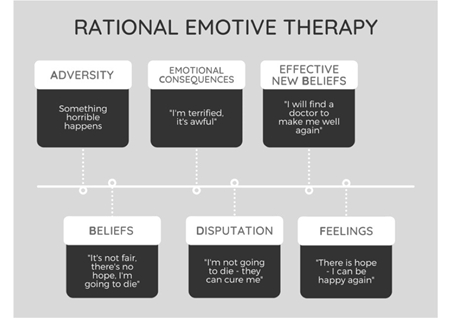Coping mentally
When you get the diagnosis, there is no doubt about what happens next: fear. This after all is a potentially fatal disease.
The body is flooded with adrenaline (a hormone which gets the body ready for flight or fight by increasing the heart rate and blood flow) and cortisol.
That’s OK for a short term crisis, where we have to act quickly or avoid imminent danger. But long term, both these bodily products, and the underlying stress, are bad for the body.
As human beings, we are naturally disposed to worry, and look out for danger. It has kept us alive so far. But it can set us up for constant anxiety.
Another part of the trouble is that most men have been trained to pretend that they can cope no matter what. They tend to default to the ‘stiff upper lip’, or “She’ll be right mate” response. Men are trained from childhood to be stoical: “don’t cry when you are hurt; keep your feelings to yourself; take risks; fight back; be self-reliant; and if it is broken, just fix it! … [In short] hang tough and be a man”1. Women cry and get emotional. Men tough it out.
The trouble however is that a diagnosis of cancer brings with it both rational problem solving challenges – what will I do, which therapy will I select, and on what time scale – and psychological challenges – how will I cope with the fear and emotional turmoil this experience is generating? Problem solving is not enough. Men can’t simply wish away the emotional fallout. There is a need for ‘emotion-focussed coping’ as well.
Having a supportive partner is ideal – a woman, or man, as the case may be, who can ‘be there’ for the sufferer, through all the ups and downs of treatment, the moments of fear and frustration, the setbacks and everything else.
One source of comfort is therapy. This is probably best provided, one on one, by a qualified psychotherapist. There is no shame in ‘seeing someone’ about what is no doubt the biggest shock of your adult life. He/she will be able to give you ways to try and cope with what’s happening, and the fear it engenders.
And for self help, there is this.
One of the successful forms of mental assistance is what is normally called ‘Rational Emotive Therapy’, or ‘Cognitive Behaviour Therapy’. It was largely invented by a brilliant American called Albert Ellis.
Ellis came up with a six point plan, to chart the way things can go wrong – and how to fix the problem. It has an easily remembered acronym:
A B C D E F
Things go wrong in life – sickness, death, divorce, misery of every kind. He calls this by the old fashioned name ‘adversity’ (misfortune, from the old Latin to ‘turn against’).

But his great insight was to say that it is not the unfortunate event which is key: it is what happens in a person’s mind in response to that event. And here is where ‘irrational’ thinking can occur.
B Beliefs about adversity – eg “It’s not fair, there’s no hope, I’m going to die”
Thinking the worst, or ‘catastrophising’, in the jargon, can set a person up for even more pain – the mental kind. This then leads to:
C Emotional consequences to those beliefs – eg “I’m terrified, it’s awful”
So the body panics, the heart races, one can’t sleep, one gets angry – it’s like a mini breakdown.
But it doesn’t have to be like this. Ellis counsels that a person should then embark on the following three stages, to modify his thoughts and feelings:
D Disputation … to challenge the beliefs – eg “I’m not going to die – they can cure me”
A person can challenge the terrible thoughts, and discover other ways of seeing the situation – without all the doom and gloom. This can lead to
E Effective new beliefs – eg “I will find a doctor to make me well again”
The old ‘certainties’ (“I’m going to die”) – can be replaced with new expectations. And in consequence:
F New feelings to replace the old ones – eg “There is hope … I can be happy again”
The influence of Ellis2, and his colleague Aaron Beck3, have revolutionised the practice of therapy. Formerly, fear, anxiety and other psychological maladies were considered as hard to eradicate as say … cancer.
The coming of ‘rational emotive therapy’ (RET), and its successor, ‘cognitive behavioural therapy’ (CBT), has transformed the way psychologists work. The old paradigm of the ‘shrink’ simply listening, and in the joke scenario or caricature saying, “And what do you think that means?” … has been changed to active intervention.
Old, destructive ways of thinking and feeling are challenged, as the therapist tries to get a patient to see that more empowering thoughts (and thus feelings) can be substituted, and lead, hopefully to a much better quality of feeling and living.
But go and see someone. It’s not weakness. It’s a way to cope better. You will spend less on a therapist, at this critical point in your life, than you would on having your car serviced. And it could make all the difference in the world to how you handle the challenge.
1 Suzanne Chambers, op cit
2 Albert Ellis, A New Guide to Rational Living, Wiltshire Book Co, 1975 and other works
3 Aaron Beck, Cognitive Therapy and the Emotional Disorders, International Universities Press, 1975 and other works
